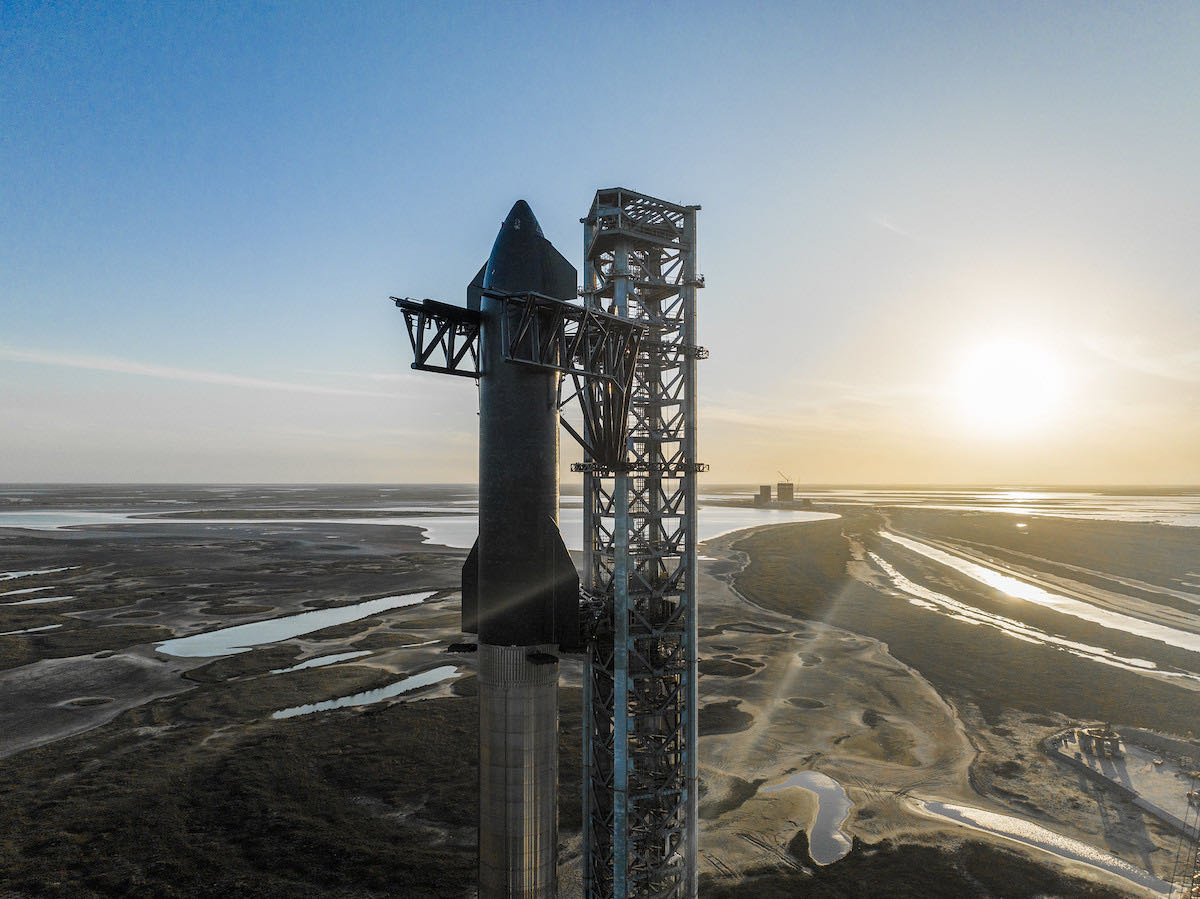
The first segment of a new launch tower for SpaceX’s behemoth Starship rocket moved across the Kennedy Space Center late Wednesday to pad 39A, where the company is poised to erect one of the tallest structures at the Cape Canaveral spaceport.
Riding a special transporter, the metal tower segment left SpaceX’s build site at the Robert Road facility inside the gates of the Kennedy Space Center for a 7-mile (11-kilometer) trip to pad 39A.
The tower segment passed by the Vehicle Assembly Building on the way to the launch pad, where SpaceX has built mounting locations for the Starship launch tower, and the structure on which the Starship’s Super Heavy booster will sit before liftoff.
The launch pad tower under construction at pad 39A sits about 1,000 feet, or 300 meters, east of the location where SpaceX launches Falcon 9 and Falcon Heavy rockets carrying satellites and astronauts into orbit. When finished, the pad will resemble the facility SpaceX has built for Starship flights in South Texas at the company’s Starbase factory and test site.
Like the launch site in Texas, SpaceX does not plan to dig a flame trench for the Starbase pad at Kennedy. The Super Heavy booster, with roughly 33 methane-fueled Raptor engines, will take off from the launch mount with around 17 million pounds of thrust, nearly twice that of NASA’s most powerful rocket, the Space Launch System, a fully expendable vehicle.
The Super Heavy and Starship stack — comprising the rocket’s first and second stages — will be fully reusable. The entire rocket stands nearly 400 feet (120 meters) tall.
NASA’s SLS rocket is about 322 feet (98 meters) tall in its current configuration. The first flight-ready Space Launch System is now standing at pad 39B, less than 1.7 miles (2.7 kilometers) north of pad 39A. Both pads at Launch Complex 39 were originally built for NASA’s Apollo moon program.

Five more launch pad tower segments are currently visible outside SpaceX’s Roberts Road site, where the company is also building a Starship factory next to a hangar used for refurbishment of Falcon 9 rocket boosters and fairings.
SpaceX is expected to periodically move more tower segments to pad 39A over the coming weeks to complete the structural build-up of the Starship pad, where teams have also moved in propellant tanks and other support equipment. Once the tower’s structure is fully assembled, construction crews will add arms used for stacking of the Starship on top of the Super Heavy booster.
The company says the arms will also be used to catch the 30-foot-wide (9-meter) Super Heavy booster when it comes back to Earth for landing.
The move of the first launch tower segment to 39A late Wednesday occurred two days after SpaceX’s plans to fly the full Starship stack from Texas received preliminary environmental approval from the Federal Aviation Administration. SpaceX previously secured environmental approval in 2019 for Starship launches from Kennedy.
Elon Musk, SpaceX’s founder and CEO, said earlier this year that the Starship base in South Texas will primarily be used for research and development and test flights, with Florida likely to be the home base for operational launches and landings.
SpaceX is also considering building a second Starship launch pad in Florida at an undeveloped site on the northern part of the Kennedy Space Center.
SpaceX’s huge privately-funded rocket, made of shiny stainless steel, will be the most powerful to ever fly.
The launcher will be able to haul more than 100 metric tons of cargo to low Earth orbit, a region a few hundred miles above the planet, according to SpaceX.
SpaceX wants to use the Starship vehicle to launch the company’s Starlink internet satellites, flying heavier, next-generation versions of the broadband relay stations than the spacecraft now being launched by the smaller Falcon 9 rocket. An animation recently released from SpaceX showed the company’s concept for deploying Starlink satellites from a Starship vehicle in orbit, using a mechanism that works like a giant Pez dispenser.
SpaceX has also won a $2.9 billion contract with NASA to develop the Starship into a human-rated lander for the agency’s Artemis moon missions. A moon derivative of the Starship, assisted by Starship refueling tankers, will be utilized for a lunar landing with astronauts, an event NASA says could happen no earlier than 2025.
Ultimately, SpaceX foresees using the Starship for other missions, including ferrying cargo and people to Mars.
Email the author.
Follow Stephen Clark on Twitter: @StephenClark1.
